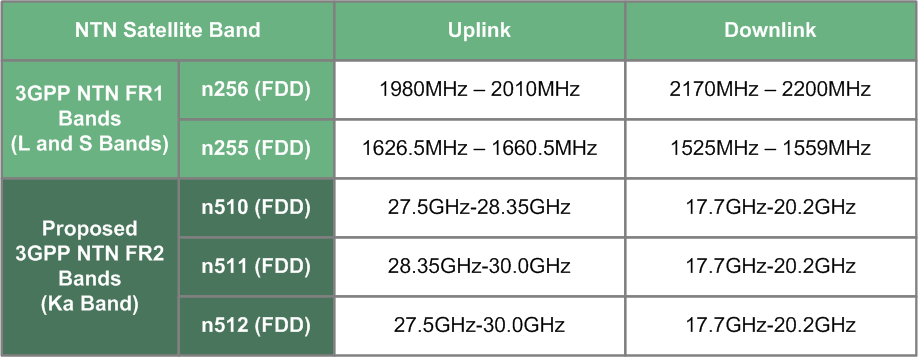5G NTN (Non Terrestrial Networks)
As the CW's International Conference (CWIC) draws closer it is interesting to see the great line up of topics; it is truly “From the Moon to the Deep Blue Sea”. As such, I thought I’d provide a little background for NTN, particularly in the context of 5G.
Telecommunications infrastructure spans the globe, including wired and wireless networks, undersea fibre optic cabling and communications satellite systems. Unfortunately, terrestrial coverage still remains a challenge and being able to connect the remaining unconnected populations is complex and potentially costly. This is where service providers are complementing their terrestrial solutions with NTN (Non-Terrestrial Networks) based deployments.

Figure 1 NTN (Non Terrestrial Networks)
Defining NTN
The term NTN (Non-Terrestrial Networks) does not just relate to satellite communications. It actually relates to any non-terrestrial network deployment using satellites, aircraft or UAV (Unmanned Aerial Vehicles). The latter is a broad range of deployments including drones, balloons and kites. NTNs provide connectivity in areas where TN (Terrestrial Networks) are unavailable or challenging to deploy, such as remote locations or where connectivity has been disrupted such as in warzones and disaster areas.

Figure 2 5G Non-Terrestrial Networks
New innovations are able to offer more economical solutions in order to connect those who are unconnected and also provide better services. These potential game changing innovations enable a range of solutions from digital financial services to better healthcare and smarter cities.
Another term used in NTN deployments is HAPS (High-Altitude Platform Station). These are essentially UAVs that operate at high altitudes, typically between 17km to 22km above the Earth's surface.
NTN Use Cases
NTN satellite based deployments require a lot of investment; however, they aim to increase the coverage, capacity and capabilities offered. Being based on 5G technology, the 5G Non-Terrestrial Networks will play a huge role in the future 5G ecosystem. Combining 5G terrestrial deployments with 5G NTNs enables the key 5G goals to be achieved, namely to provide seamless coverage, high data rates, low latency, low power and highly reliable communications.
The use of 5G Non-Terrestrial Network deployments will provide many specific use-cases, however broadly they can enhance connectivity to various devices. In addition, they could provide backhaul from remote sites, which may be existing 4G/5G sites or even other technologies such as Wi-Fi.

Figure 3 Example High Level NTN Use Cases
The high bandwidth potential of future 5G NTNs also facilitates use cases related to trunking or head end operation, whereby multiple endpoints are multiplexed onto the 5G NTN. For example, this could be providing connectivity to a remote village. Finally, 5G NTN broadband capability could facilitate multi-play operation, effectively combining multiple services to endpoints, or augmenting existing services.
It is also worth noting that IoT (Internet of Things) related NTN is one particular aspect of NTN that is seeing huge standardization within the 3GPP, both in terms of 5G and 4G LTE, i.e. utilizing LTE-M (LTE Machine Type Communications) and NB-IoT (Narrowband IoT) approach.
5G NTN Spectrum Challenges
Rapidly evolving technologies require suitable spectrum to ensure their success; this is where the ITU’s WRC (Worldwide Radio Conference) assists. The most recent WRC event has enabled the adoption of a new milestone-based approach for the deployment of NGSO (Non-Geostationary Satellite Orbit) systems in specific radio-frequency bands and services.
3GPP Release 18 specifications currently don’t define a huge list of supported frequency bands for 5G NTN satellite device access. Figure 3 illustrates the main bands defined. In NTN FR1 (Frequency Range 1), which spans 410MHz to 7125MHz, there are two key bands: n255 (NTN 1.6GHz) and n256 (NTN 2GHz). These form the 5G NTN band offering for the L-band and S-band, which is existing satellite band terminology.
In contrast, the NTN FR2 (Frequency Range 2) spans 17300MHz to 30000MHz and is part of the Ka-band satellite band. In terms of 5G NTN, currently there are three proposed FR2 NTN satellite bands: n510, n511 and n512. Like many Ka band links, the downlink band (Satellite to Earth Station) is the lower frequency.

Figure 4 NTN Satellite Bands in FR1/FR2
The choice of band relates to the various regulatory requirements in different countries, for example the n512 band is applicable in the countries subject to CEPT (European Conference of Postal and Telecommunications Administrations) ECC (Electronic Communications Committee) decisions. The n511/n512 bands are applicable in the USA and are subject to various FCC (Federal Communications Commission) rules.
Conclusion
5G NTN standardization, as well as incorporation into LTE has started and the majority of standardization is part of 3GPP Release 18. There is definitely a future role for 5G Non-Terrestrial Networks. However, as with all satellite based systems there are many challenges related to cost, deployment, competition, radio spectrum, regulation, as well as actual device support of specific 5G NTN radio bands.





